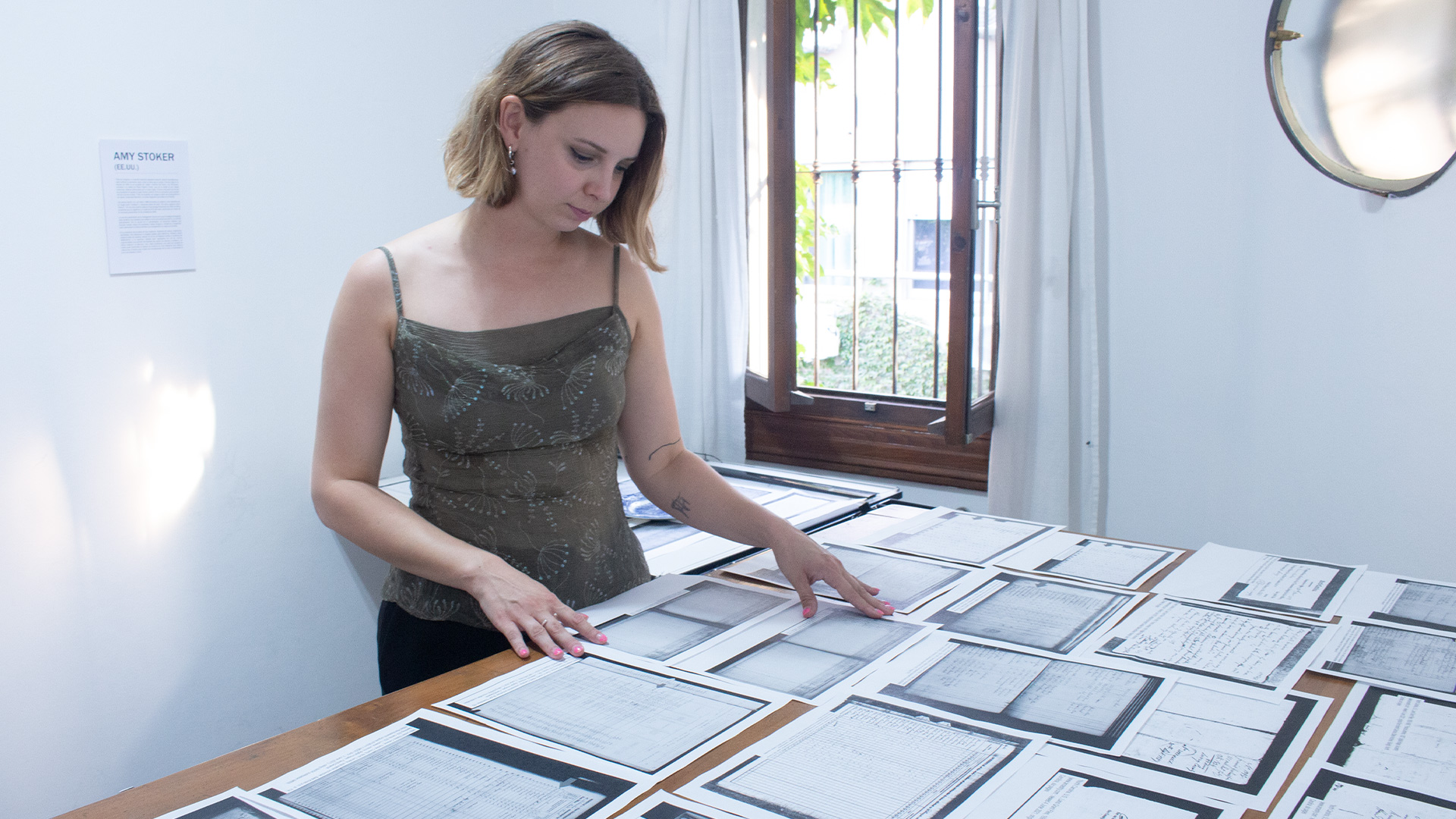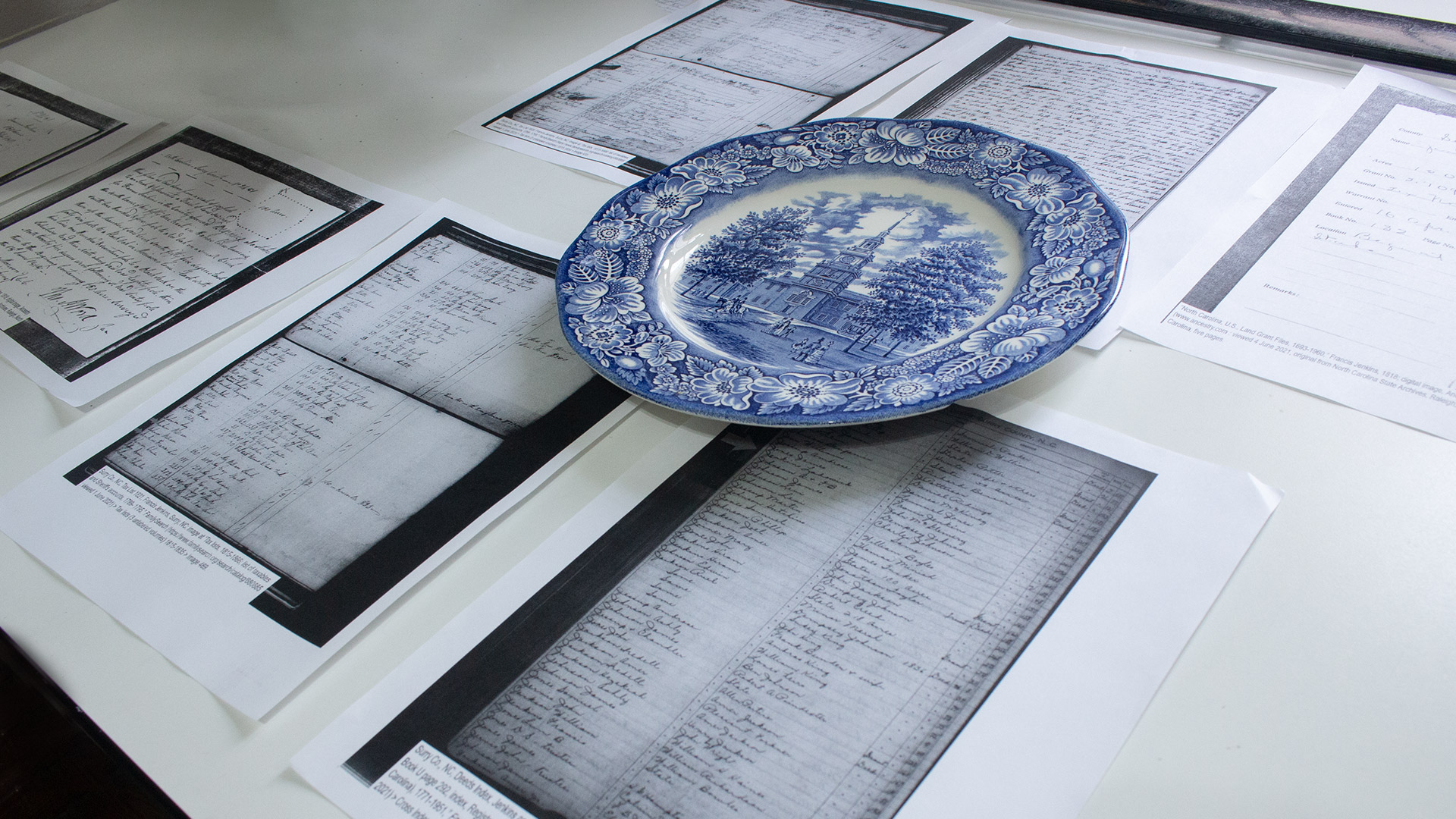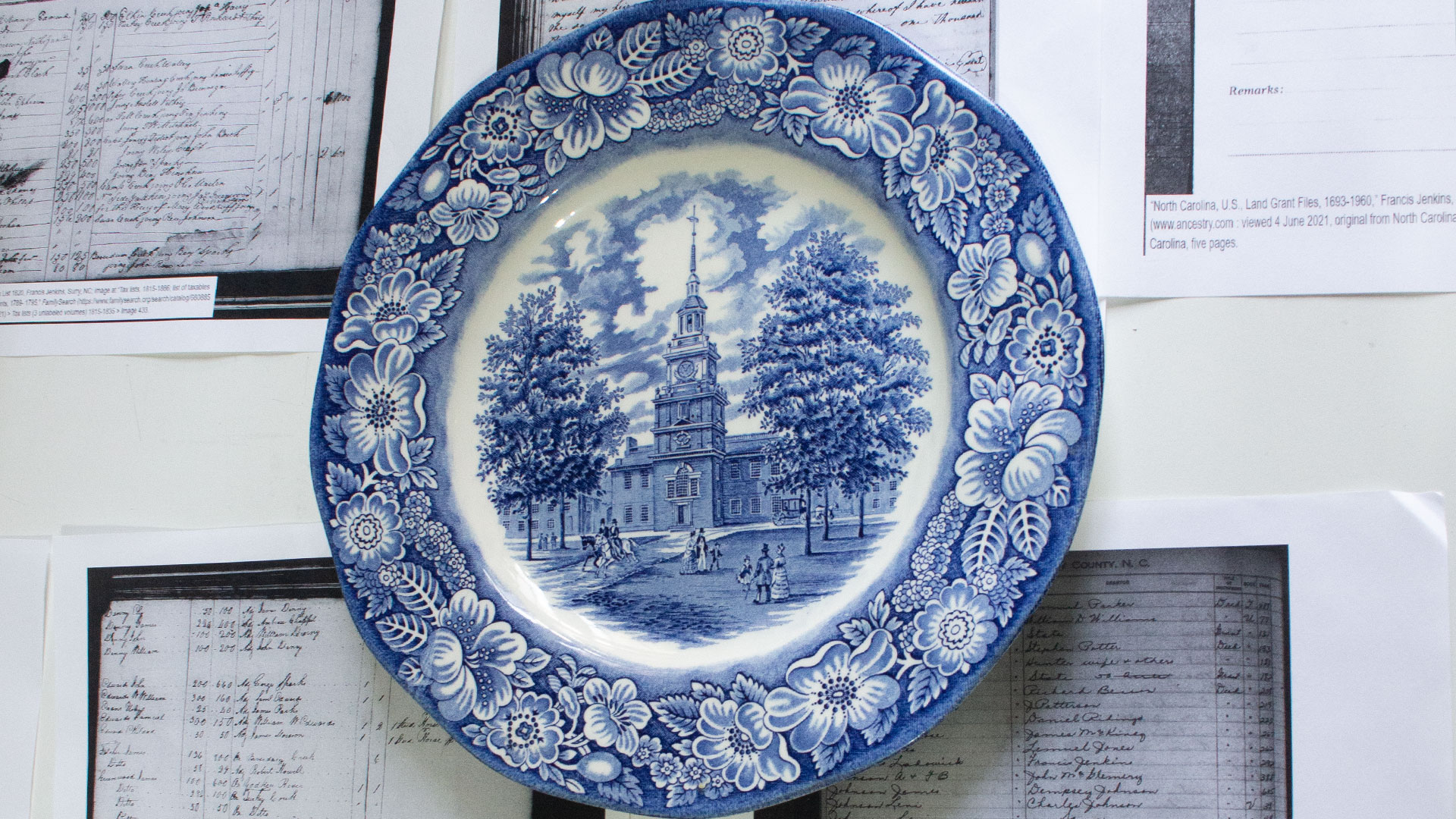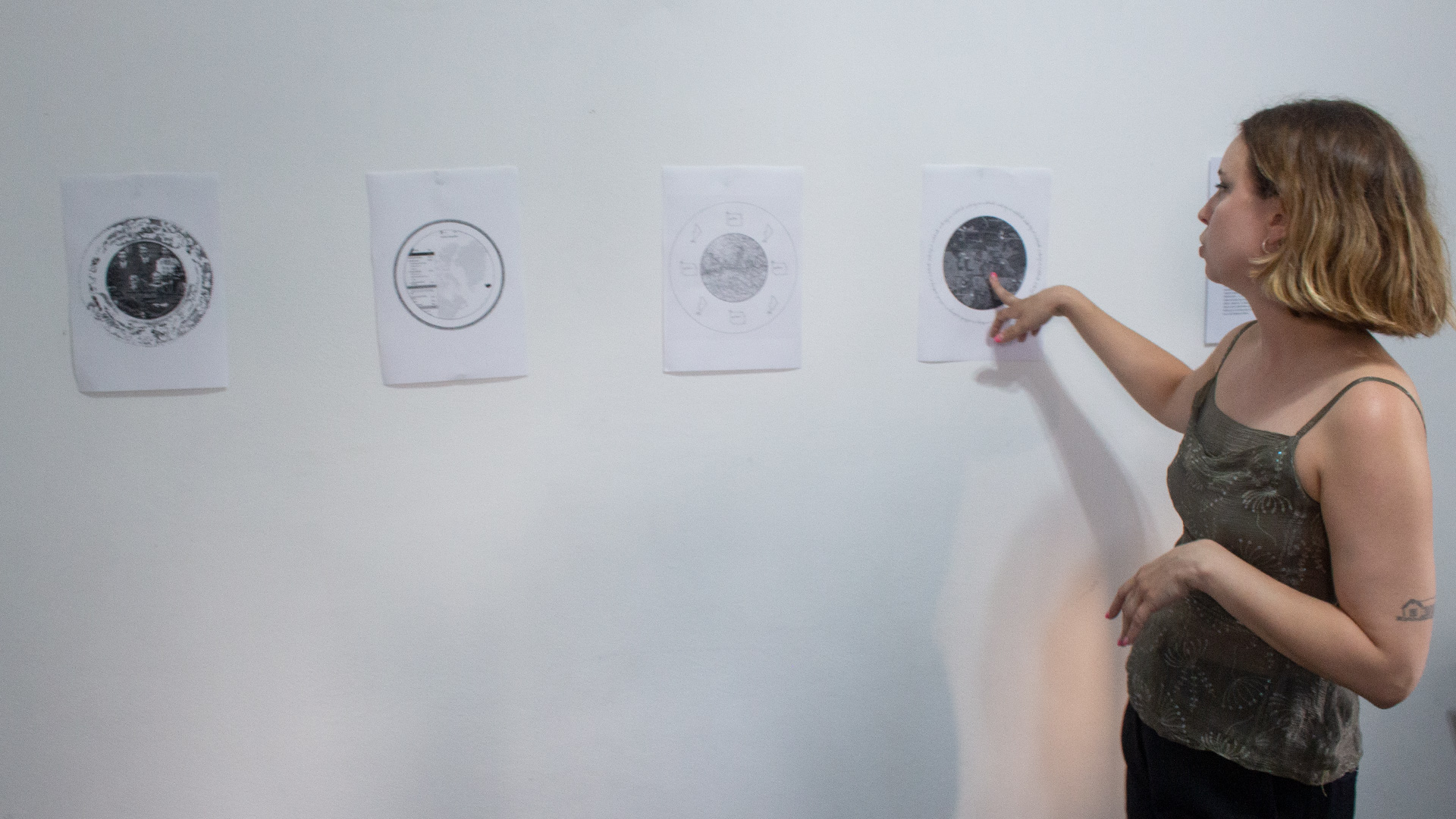Artists
United States of America
Amy Stoker
Who was Loderick Jenkins?
06.02.23 01.03.23
Amy Stoker is an interdisciplinary artist and faculty member at Parsons School of Design in New York, where she has received faculty development awards and fellowships to support her work in anti-oppression pedagogy. During her residency, Amy used archival documents recovered during her family’s genealogy research to create several digital patterns that she will then transfer print onto ceramic dinnerware, creating a plate set in the style of the iconic Italian Spode Blue dinnerware, a collectible in his hometown that alludes to wealth, status, and ultimately, mainstream white culture.
ARTIST STATEMENT
Whiteness permeates the cultural landscape of the United States, yet is the absence of culture. I use installation, performance, and sculpture to address the latent and overt symbols of whiteness in the everyday. As a queer, white woman raised in the American South, I employ a language of autoethnography to examine how material culture symbolizes whiteness within traditions, food, and architecture.
My work utilizes everyday and manufactured materials to create work that signifies my relationship to whiteness and the paradox of the American Dream. Family history, like my mother’s stories as a farmer’s daughter raised during the civil rights era and my socialization as a child within the patriarchal rituals of the Baptist church, is woven together with critical race theory, intersectional feminism, and anti-capitalist idealogy. I use the past to reflect on the present and am invested in using my practice as an avenue of my ongoing unlearning and action in anti-oppression work. Rather than position my work within narratives of white guilt and shame, I examine the institutional structures that I am complicit in and work to share these thoughts and revelations with an audience.
BIO
Amy Stoker
1991 | Valdosta, Georgia , USA
Lives and works in Brooklyn, NY, USA
EDUCATION
2015 | Master in Fine Arts. School of the Art Institute of Chicago, Chicago, USA
2013 | Bachelor’s in Fine Arts. New York University, Tisch School of the Arts, New York, USA
EXHIBITIONS
2019 | Mi casa es su casa. CasaLü, Parque Hundido, Mexico City, Mexico
2018 | White Anxieties. WhiteBox Gallery, New York, NY
2018 | Food Chain, RE:ARTISTE. Gallery MC, New York, NY
2018 | From Miniscule to Monumental, LIC Arts Open. The Factory, Long Island City, Queens
2016 | Acts of Sedition. WhiteBox Gallery, New York, NY
RESIDENCIES
2023 | Proyecto´ace Production Residency. Buenos Aires, Argentina
2021 | Proyecto´ace, Together Apart, FRONTIER English Cohort, Buenos Aires, Argentina (online)
2019 | CasaLü, Parque Hundido, Artist-in- residence, Mexico City, MX
2019 | Pike School of Art, Artist-in- residence, McComb, MS
Related Activities
´aceNITE
Stories
Artists in Dialogue
01.03.23
The second aceNITE of the year presented five women artists from different origins (Chile, Canada, Spain, the United States, Venezuela and England) intertwining cultures, identities and memories to tell stories, discover secrets and make visible forgotten circumstances through the projects carried out during their residences at ´ace, in the first slot of 2023.
The territory, its journey and personal experiences are present in the stories of Amy Stoker (USA) and Constanza Reyes (Chile). Stoker´s visual research constructs a narrative that reflects the struggle of generational unknowing and loss. With the help of a genealogist, the artist acquired records including censuses, land deeds, vintage and modern maps, and photographs to depict the family history that went missing over the years, seeking to build a narrative that reflects ignorance and generational loss. By other hand, Reyes uses as a starting point a kind of found object: a book bougth during her tours around Buenos Aires that narrates and describes the conquest of Peru. With the intention of appropriating the book, the artist adapts the story with the history of the conquest of Chile, and with contemporary Chilean conflicts, according to her own experience, making a printed intervention on it.
Ariana Pirela Sánchez (Venezuela-Spain-Canada), Elizabeth Castaldo (United States) and Sacha Beeley (England) highlight stories related to the female universe. Beeley, present a short film that explores the harsh life of a Queen Bee within the hive. The film metaphors with women invites you to think about mothers in all shapes and sizes and the invisible emotional labour they carry out. Elizabeth Castaldo addresses the idea of the divine in the feminine as a creative power and a force of connection with nature through an installation in the Diálogo space, which presents an installation overflowed of shapes and colors. Finally, Ariana Pirela Sánchez (with a melted culture that comes from her Venezuelan and Spanish origins mixed by years of residence in Canada) uses a legend of the Wayúu culture (as a metaphor to narrate the female transmission of teachings) to weave and unweave the threads of memory. She re-weaved the forgotten stories through a poetic installation made with raw wool, which she built and in where she developed her performance.
We also celebrated Marcela Caballeros´s installation finissage -after three months on display- in the Espacio Transversal.
Related artists
Exhibitions
Who was Loderick Jenkins?
Amy Stoker
01.03.23 01.03.23
What is seen presented is the visual research Amy Stoker has been working in her residency at ´ace. She developed a narrative that reflects the struggle of generational unknowing and loss. With the help of a genealogist, she has acquired records including censuses, land deeds, vintage and modern maps, and photographs to depict the family history that went missing over the years.
In the presence of whiteness there is absence. Absence of culture, traditions, identities. People cling to their objects to define themselves. Their material culture speaks to their values. In the American South, Staffordshire pottery or blue transferware represents one of the many collectibles families display that alludes to wealth, status, and ultimately, whiteness. A number of design tests have been displayed to be printed on ceramic plates in an installation that uses the artist’s family history to illustrate the complexities of race and identity in the American South.
¨I try to imagine Lodwick/Loderick/Lodweek/Lodowick Jenkins rising every morning at dawn to tend the land his father, Francis, bequeathed in 1830s Yadkin County, North Carolina. The 158 acres, located off of Peach Bottom Creek, which no longer exists on modern maps, was demarcated by a black oak. The sole marker of the property line is perhaps where Loderick took his lunch to escape the harsh afternoon sun. I try to imagine his features from the photograph of his mother, Susannah Morrison, the only photograph I possess of the family. The U.S. censuses of 1830 and 1860 lists Loderick and members of his household as “mulatto” and “free persons of color”. On others, he is listed as “white”. Perhaps this could account for the fractional percentage of West African DNA that registered on my 23 & Me profile several years ago amidst the growing popularity of DNA testing. ¨ – Amy Stoker-




